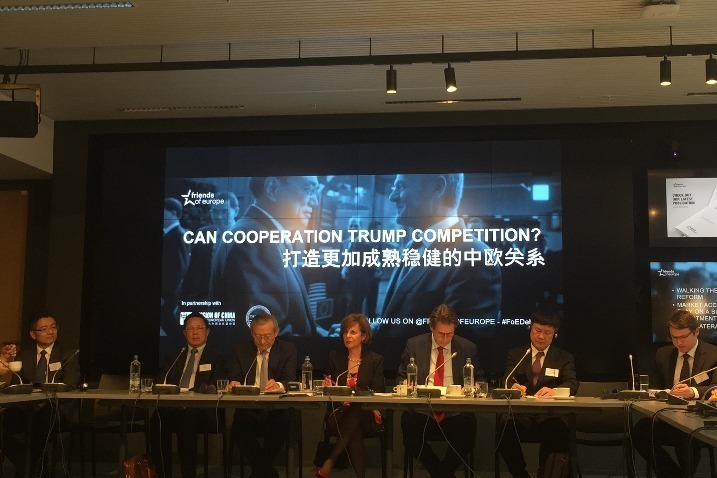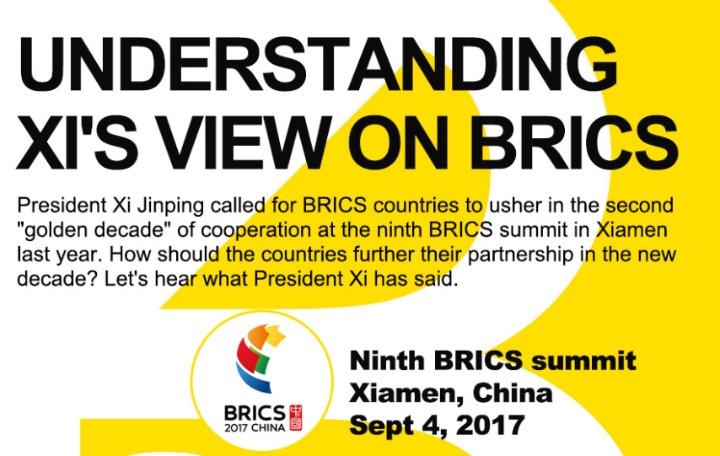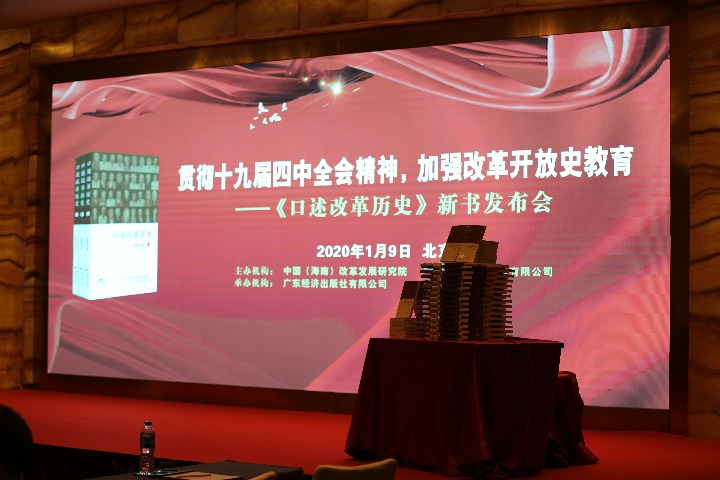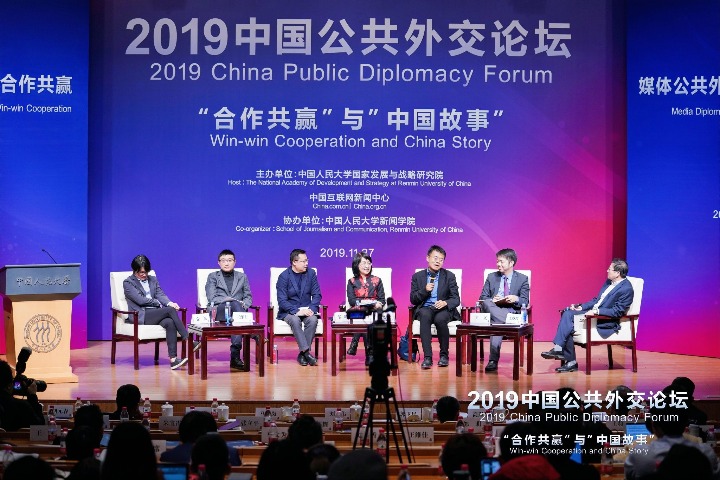Hainan’s potential and silver lining of ZTE ban
By Zhang Zhao |
China Watch |
Updated: 2018-04-24 15:21
Thirty years after becoming a province, Hainan Island now has a new label — a free trade port, as announced in a government guideline unveiled on April 14.
Why Hainan? Wei Jianguo, vice-chair of the board at the China Center for International Economic Exchanges, told China Business News that the decision was not just based on economic reasons.
Hainan is designed to be built as a "service area to guarantee national major strategies", according to the government guideline, which means it will be a place to connect the Association of Southeast Asian Nations and countries in the South China Sea for trade and people-to-people exchanges, Wei said.
He added that the plan is an answer to the United States' Indo-Pacific strategy, giving Hainan more advantages in the competition against Taiwan.
Wei also explained the difference between a free trade zone and a free trade port: An FTZ is a pilot zone that facilitates free flow of commodities and accumulates experience that can be applied elsewhere; while a free trade port is about not just commodities but also people. It must be world class in all aspects including capital, investment, laws, intellectual property and business climate.
He suggested Hainan learn from successful free trade ports overseas and integrate China's characteristics and local advantages. This point of view was echoed by Zhao Jinping from the State Council’s Development Research Center.
"There is no fixed model to build FTZs or free trade ports. There is not even a fixed term to call them," Zhao said. "Therefore, Hainan can borrow international experience to build a free trade port that caters to China's conditions."
Hainan is already a special economic zone, and Bai Ming from the Ministry of Commerce's Chinese Academy of International Trade and Economic Cooperation said a free trade port with Chinese characteristics would be an "upgraded version of an SEZ".
He called for institutional breakthroughs and innovation during the development of the free trade port. "All departments and all sectors should carry out reform in a coordinated way," he said. "We should further open the service industry steadily and protect environment both on land and in sea."
Bai also warned that health and elderly care services should not end up becoming just real estate businesses.
Many Chinese companies have invested heavily in real estate businesses or other alluring sectors with quick and abundant returns instead of down-to-earth research and development. Yet the recent US ban on Chinese telecom equipment maker ZTE from buying US technology for seven years has reminded people again of the importance of technical innovation.
Original innovation is China's most prominent shortcoming compared with the world's technology powerhouses, according to an article written by Zhong Zhihua, an academician at the Chinese Academy of Engineering, and Wu Ji, executive director of the Chinese Academy of Sciences' National Space Science Center.
They said building the ability to create disruptive original innovation is a "trump card" for the nation's rejuvenation. "Disruptive original innovation is highly uncertain and cannot be foreknown precisely," the article said. "We have to respect the law of science … and the key is to foster an innovation-friendly institutional environment."
The article suggested China's future science and tech-related work should aim at establishing a disruptive research system, focusing on the strategically critical fields and starting on building world-class research-oriented universities.
Leng Fuhai, a researcher at the CAS, quoted the UNESCO Science Report: Towards 2030, issued in 2015, as saying that Chinese scientists and engineers have "clocked up some remarkable achievements since 2011".
"Despite a massive injection of funds, better-trained researchers and sophisticated equipment, Chinese scientists have yet to produce cutting-edge breakthroughs. Few research results have been turned into innovative and competitive products and China faces a $10 billion deficit (2009) in its intellectual property balance of payments," the report noted.
However, Leng said the new technical revolution has provided opportunities for China to enhance its basic scientific and technical research capacity. He listed six mid- and long-term national guidelines for scientific and technical development that cover the period from 1956 to 2020 to show the government's consistent support to basic research.
Back to the ZTE issue: Why is it banned after paying $892 million in fines? Cui Xiaomin from the Chinese Academy of Social Sciences' Institute of World Economics and Politics said the company is more of a target for the US to sanction China amid the current trade conflict.
First, the ban happened when the conflict was intensifying, but no actual action was carried out besides tariff lists unveiled by both parties. Second, ZTE is a company in the IT and telecom industry — a focused sector on the US' tariff list and a sector in which the competitiveness of China and the US is changing drastically.
More importantly, ZTE, like Huawei, is one of the few Chinese telecom companies with global competitiveness, so beating ZTE is in line with the idea to constrain Chinese high-tech products, which the US has expressed.
The US' challenge may not be a bad thing completely — it is encouraging Chinese industry to improve itself, said Peng Bo and Lin Zhigang from the Chinese Academy of International Trade and Economic Cooperation.
Their article quoted German economist Friedrich List's finding in the 19th century: When the United Kingdom was trading with the less-advanced France and Germany, abundant British products flooded into the two countries and their own industrial systems collapsed; and when the UK blockaded France and Germany, their industry developed faster.
Likewise, the US trade war against China may have the opposite effect. The US has a higher development level than China, and the two countries have close industrial cooperation. This has boosted China's economic development, but also solidified China's status as a follower. The current obstacle will slow down China's industrial development and upgrading in the short term, but in the long term may force China to develop its high-end industries to improve Chinese companies' competitiveness against their US counterparts, according to Peng and Lin's article.
A new round of technical revolution is bringing about profound changes to industries and people's lifestyle. A "digital China" is a hot topic among Chinese scholars, and a forum on the topic was held in Fuzhou, Fujian province, from April 22 to 24.
Ma Jiantang, deputy director of the State Council's Development Research Center, said the essence of the digital economy is about reducing uncertainty in economic activities to the largest extent.
He also summed up three basic features of the digital economy: It is based on big data; smart machines will partially replace man but follow instructions and logic of man; and its infrastructure, including computers, portable terminals and software platforms linking them together, has the capacity of collecting, transmitting, handling, analyzing, utilizing and storing data.
Digitizing tradition industries is "more like transplanting a 30-year-old heart to a 60-year-old man than putting on a new jacket", said an article written by Ma's colleagues, Su Yang and Wang Xiaoming.
The article noted that despite a consensus about promoting digitization as a national strategy, developed countries have different paths. For China, it also should consider the advantages and disadvantages of its manufacturing sector.
Some necessary measures are listed, including a strategic overall plan, digital infrastructure, improved laws and regulations, an education system, and a coordinated industrial structure consisting of large and small companies.
Zheng Dahai from the Liaowang Institute used a report on China's digital economy in 2017 to say that the economy is experiencing a "turning point" shifting its focus from quantitative to qualitative development.
The digital economy has generated businesses and models, which lead to new challenges to existing regulation and supervision. It also brings about contradictions, such as public interests versus commercial management, and fast development of platforms versus backward supervision measures.
Therefore, digitization should include not only the digital economy and industries, but also social and government services, said Ma Mingjie from the State Council’s Development Research Center.
"Digital technologies, such as big data and cloud computing, not only promote industrial development but also provide opportunities for social development," he said.
One example is the elderly care business. Aging population is a challenge China faces today. Intelligent elderly care and online medical services will help solve the problem of imbalanced resources.
Zhang Zhao is a China Watch researcher.
All rights reserved. Copying or sharing of any content for other than personal use is prohibited without prior written permission.
Thirty years after becoming a province, Hainan Island now has a new label — a free trade port, as announced in a government guideline unveiled on April 14.
Why Hainan? Wei Jianguo, vice-chair of the board at the China Center for International Economic Exchanges, told China Business News that the decision was not just based on economic reasons.
Hainan is designed to be built as a "service area to guarantee national major strategies", according to the government guideline, which means it will be a place to connect the Association of Southeast Asian Nations and countries in the South China Sea for trade and people-to-people exchanges, Wei said.
He added that the plan is an answer to the United States' Indo-Pacific strategy, giving Hainan more advantages in the competition against Taiwan.
Wei also explained the difference between a free trade zone and a free trade port: An FTZ is a pilot zone that facilitates free flow of commodities and accumulates experience that can be applied elsewhere; while a free trade port is about not just commodities but also people. It must be world class in all aspects including capital, investment, laws, intellectual property and business climate.
He suggested Hainan learn from successful free trade ports overseas and integrate China's characteristics and local advantages. This point of view was echoed by Zhao Jinping from the State Council’s Development Research Center.
"There is no fixed model to build FTZs or free trade ports. There is not even a fixed term to call them," Zhao said. "Therefore, Hainan can borrow international experience to build a free trade port that caters to China's conditions."
Hainan is already a special economic zone, and Bai Ming from the Ministry of Commerce's Chinese Academy of International Trade and Economic Cooperation said a free trade port with Chinese characteristics would be an "upgraded version of an SEZ".
He called for institutional breakthroughs and innovation during the development of the free trade port. "All departments and all sectors should carry out reform in a coordinated way," he said. "We should further open the service industry steadily and protect environment both on land and in sea."
Bai also warned that health and elderly care services should not end up becoming just real estate businesses.
Many Chinese companies have invested heavily in real estate businesses or other alluring sectors with quick and abundant returns instead of down-to-earth research and development. Yet the recent US ban on Chinese telecom equipment maker ZTE from buying US technology for seven years has reminded people again of the importance of technical innovation.
Original innovation is China's most prominent shortcoming compared with the world's technology powerhouses, according to an article written by Zhong Zhihua, an academician at the Chinese Academy of Engineering, and Wu Ji, executive director of the Chinese Academy of Sciences' National Space Science Center.
They said building the ability to create disruptive original innovation is a "trump card" for the nation's rejuvenation. "Disruptive original innovation is highly uncertain and cannot be foreknown precisely," the article said. "We have to respect the law of science … and the key is to foster an innovation-friendly institutional environment."
The article suggested China's future science and tech-related work should aim at establishing a disruptive research system, focusing on the strategically critical fields and starting on building world-class research-oriented universities.
Leng Fuhai, a researcher at the CAS, quoted the UNESCO Science Report: Towards 2030, issued in 2015, as saying that Chinese scientists and engineers have "clocked up some remarkable achievements since 2011".
"Despite a massive injection of funds, better-trained researchers and sophisticated equipment, Chinese scientists have yet to produce cutting-edge breakthroughs. Few research results have been turned into innovative and competitive products and China faces a $10 billion deficit (2009) in its intellectual property balance of payments," the report noted.
However, Leng said the new technical revolution has provided opportunities for China to enhance its basic scientific and technical research capacity. He listed six mid- and long-term national guidelines for scientific and technical development that cover the period from 1956 to 2020 to show the government's consistent support to basic research.
Back to the ZTE issue: Why is it banned after paying $892 million in fines? Cui Xiaomin from the Chinese Academy of Social Sciences' Institute of World Economics and Politics said the company is more of a target for the US to sanction China amid the current trade conflict.
First, the ban happened when the conflict was intensifying, but no actual action was carried out besides tariff lists unveiled by both parties. Second, ZTE is a company in the IT and telecom industry — a focused sector on the US' tariff list and a sector in which the competitiveness of China and the US is changing drastically.
More importantly, ZTE, like Huawei, is one of the few Chinese telecom companies with global competitiveness, so beating ZTE is in line with the idea to constrain Chinese high-tech products, which the US has expressed.
The US' challenge may not be a bad thing completely — it is encouraging Chinese industry to improve itself, said Peng Bo and Lin Zhigang from the Chinese Academy of International Trade and Economic Cooperation.
Their article quoted German economist Friedrich List's finding in the 19th century: When the United Kingdom was trading with the less-advanced France and Germany, abundant British products flooded into the two countries and their own industrial systems collapsed; and when the UK blockaded France and Germany, their industry developed faster.
Likewise, the US trade war against China may have the opposite effect. The US has a higher development level than China, and the two countries have close industrial cooperation. This has boosted China's economic development, but also solidified China's status as a follower. The current obstacle will slow down China's industrial development and upgrading in the short term, but in the long term may force China to develop its high-end industries to improve Chinese companies' competitiveness against their US counterparts, according to Peng and Lin's article.
A new round of technical revolution is bringing about profound changes to industries and people's lifestyle. A "digital China" is a hot topic among Chinese scholars, and a forum on the topic was held in Fuzhou, Fujian province, from April 22 to 24.
Ma Jiantang, deputy director of the State Council's Development Research Center, said the essence of the digital economy is about reducing uncertainty in economic activities to the largest extent.
He also summed up three basic features of the digital economy: It is based on big data; smart machines will partially replace man but follow instructions and logic of man; and its infrastructure, including computers, portable terminals and software platforms linking them together, has the capacity of collecting, transmitting, handling, analyzing, utilizing and storing data.
Digitizing tradition industries is "more like transplanting a 30-year-old heart to a 60-year-old man than putting on a new jacket", said an article written by Ma's colleagues, Su Yang and Wang Xiaoming.
The article noted that despite a consensus about promoting digitization as a national strategy, developed countries have different paths. For China, it also should consider the advantages and disadvantages of its manufacturing sector.
Some necessary measures are listed, including a strategic overall plan, digital infrastructure, improved laws and regulations, an education system, and a coordinated industrial structure consisting of large and small companies.
Zheng Dahai from the Liaowang Institute used a report on China's digital economy in 2017 to say that the economy is experiencing a "turning point" shifting its focus from quantitative to qualitative development.
The digital economy has generated businesses and models, which lead to new challenges to existing regulation and supervision. It also brings about contradictions, such as public interests versus commercial management, and fast development of platforms versus backward supervision measures.
Therefore, digitization should include not only the digital economy and industries, but also social and government services, said Ma Mingjie from the State Council’s Development Research Center.
"Digital technologies, such as big data and cloud computing, not only promote industrial development but also provide opportunities for social development," he said.
One example is the elderly care business. Aging population is a challenge China faces today. Intelligent elderly care and online medical services will help solve the problem of imbalanced resources.
Zhang Zhao is a China Watch researcher.
All rights reserved. Copying or sharing of any content for other than personal use is prohibited without prior written permission.









